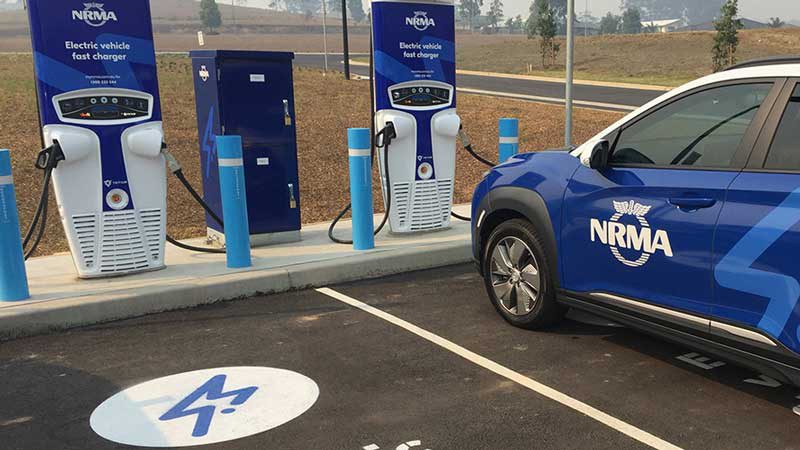The head of NRMA Energy says the motoring group expects to launch its first trial for payments on its rapidly expanding electric vehicle fast-charging network later this year.
NRMA Energy boss Carly Irving-Dolan says the group is currently developing a smart phone app that will allow payments to be made at its charging network, which is current delivered at no cost – a boon for many EV drivers, but a bonus that some are now abusing, creating queues and frustrations at some fast charging stations.
“The aim is is that around October, November is when we will start to look at a trial (for billing),” Irving-Dolan says in the latest episode of The Driven podcast. “And if we can get that right, then we’ll go from there. But that is the plan.”
Irving-Dolan says charging rates have not yet been decided, but hinted at discounts for members and fleet operators and business operators.
“It’s really important that we want people to use our chargers,” she says.
“So we want to make sure it’s very competitive in terms of of pricing. We’re not here to make … huge amounts of money at all, it’s just to ensure that we can actually continue to build infrastructure for the users.”
Of course, getting people to pay money also demands increased reliability for the charging stations themselves. NRMA has not been alone in suffering from outages from broken chargers, a situation that Irving-Dolan blames on the lack of spare parts, the nature of the first of its kind technology, and higher than expected use.
She says that NRMA has been steadily replacing many of the first-generation charging systems, and its new networks will introduce new providers, including ABB and Kempower. NRMA also has a live monitoring system that can identify outages and get them fixed quickly.
“So we’ve been getting some feedback in terms of performance and making sure that the network is stable. And we’re certainly improving that,” Irving-Dolan says.
“It (the free charging) was part of getting ready and helping people with the transition. But also, we didn’t want to charge for things that weren’t reliable. And we’re now getting to that point of a couple of things where reliability is really increasing.
“So we’ve replaced some of the older fleet (of chargers) … and we’ll continue to do that.”
NRMA is also building a national network of 135 charging sites around Australia, at a cost of around $90 million. The federal government is contributing $39 million in a co-founding deal for 117 of these sites.

The sites are designed to fill in gaps in remote regions, which means that many of them – will have to be built off-grid, where there is currently no infrastructure.
That means creating stand-alone systems, Irving Dolan says, comprising “trailer packs” with the chargers, solar, batteries and probably some diesel back-up. Satellite communications will also be needed, because there will be no 4G or 5G communications.
“So we have to build some solutions to enable some of those areas to actually be able to charge.”
The fast-charging stations will have a minimum capacity of 300kW, although that might mean that with multiple bays, individual chargers might be limited to around 75kW if all the bays are being used at the same time. Some sites could go up to 400kW.
All in all, Irving-Dolan estimates that Australia will need some 30,000 fast charging sites across the country. The it also needs to focus on other charging needs, particularly for those in urban areas where they have no off-street parking.
The NRMA is continuing to look at rolling out more infrastructure at destination locations including shopping centres, entertainment venues, and caravan and camping grounds where the infrastructure will range from AC to Ultrafast chargers.
To hear the full interview with Carly Irving-Dolan, and the latest wrap up of the latest news with The Driven’s lead reporter Daniel Bleakley, and to view previous episodes and interviews, please go to our podcast page here.

Giles Parkinson is founder and editor of The Driven, and also edits and founded the Renew Economy and One Step Off The Grid web sites. He has been a journalist for nearly 40 years, is a former business and deputy editor of the Australian Financial Review, and owns a Tesla Model 3.

